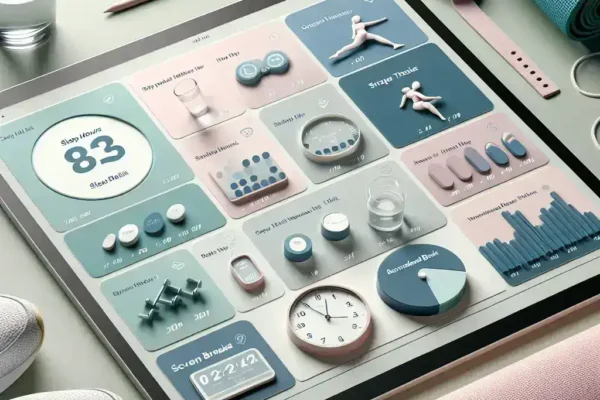Are you tired of dealing with a slow computer that seems to take forever to load even the simplest of tasks? Whether you’re a tech enthusiast or a casual user, a sluggish computer can be incredibly frustrating. In this comprehensive guide, we will explore various methods to help you fix your slow computer and get it running smoothly again. From simple tweaks to more advanced solutions, you’ll find everything you need to know to optimize your system and enhance your computing experience.
Understanding Why Your Computer Is Slow
Before diving into the solutions, it’s important to understand why your computer might be running slow. There are several common reasons that can cause performance issues:
- Overloaded Hard Drive: If your hard drive is nearly full, it can significantly slow down your computer as it has less space to store temporary files and cache data.
- Too Many Startup Programs: When too many programs are set to run at startup, they can eat up your system resources and slow down the boot process.
- Outdated Software: Running outdated software, including your operating system and applications, can lead to compatibility issues and decreased performance.
- Malware and Viruses: Malicious software can drain your computer’s resources and cause it to lag.
- Limited RAM: Insufficient random access memory (RAM) can result in slow performance, especially when running multiple applications simultaneously.
- Damaged Hardware: Faulty hardware components, such as a failing hard drive or overheating CPU, can also contribute to a slow computer.
Now that we’ve identified some of the potential culprits, let’s dive into the steps you can take to fix your slow computer.
Step 1: Clean Up Your Hard Drive
One of the most effective ways to speed up your computer is to clean up your hard drive. Over time, your hard drive can accumulate a lot of unnecessary files, including temporary files, system logs, and old downloads. Here’s how you can do it:
- Uninstall Unused Programs: Go to the Control Panel or Settings app, depending on your operating system, and uninstall any programs you no longer use. This will free up valuable disk space and reduce the number of programs that might be running in the background.
- Clear Temporary Files: Use the Disk Cleanup tool built into Windows to remove temporary files, system logs, and other junk. Alternatively, you can use a third-party tool like CCleaner for a more thorough cleanup.
- Delete Old Downloads: Check your Downloads folder and delete any files you no longer need. This can include old installers, PDFs, and large media files.
- Empty the Recycle Bin: Files deleted from your computer go to the Recycle Bin. Empty it regularly to reclaim more space.
- Move Large Files to External Storage: If you have a lot of large files, such as videos or high-resolution images, consider moving them to an external hard drive or cloud storage service to free up space on your main drive.
By performing these steps, you can significantly reduce the clutter on your hard drive and improve your computer’s overall performance.
Step 2: Optimize Your Startup Programs
Another major contributor to a slow computer is having too many programs set to run at startup. These programs can consume a significant amount of system resources, making your computer feel sluggish right from the beginning. Here’s how to manage them:
- Access the Task Manager: Press Ctrl + Shift + Esc to open the Task Manager. Navigate to the “Startup” tab to see a list of all programs that run when your computer starts.
- Disable Unnecessary Programs: Right-click on any program you don’t need at startup and select “Disable.” Focus on disabling programs that you rarely use or that aren’t essential for your daily tasks.
- Use System Configuration Tool: For more advanced control, you can use the System Configuration tool (msconfig) to disable specific services and startup items. Be cautious when using this tool, as disabling essential services can cause system instability.
Optimizing your startup programs can dramatically reduce boot times and improve the responsiveness of your computer.
Step 3: Update Your Software
Keeping your software up-to-date is crucial for maintaining optimal performance. Outdated applications and drivers can cause compatibility issues and slow down your computer. Here’s what you need to do:
- Update Your Operating System: Regularly check for OS updates and install them. Windows users can do this through the Windows Update settings, while Mac users can use the macOS Software Update feature.
- Update Drivers: Ensure that all your hardware drivers are up-to-date. You can use a driver updater tool or visit the manufacturer’s website to download the latest drivers.
- Install Latest Security Patches: Security patches not only protect your computer from threats but also often include performance improvements. Make sure to install these updates promptly.
- Update Applications: Keep all your installed applications updated. Most apps have an automatic update feature, but you can also manually check for updates in their settings or on their respective websites.
By keeping your software current, you can ensure that your computer runs efficiently and securely.
Step 4: Protect Your Computer from Malware and Viruses
Malware and viruses can severely degrade your computer’s performance. They can consume system resources, interfere with processes, and even steal your data. Here are some tips to keep your computer safe:
- Install a Reliable Antivirus Program: Choose a reputable antivirus program and install it on your computer. Popular options include Norton, McAfee, and Avast. Make sure to perform regular scans to detect and remove any threats.
- Run a Malware Scan: In addition to antivirus software, consider using a dedicated malware scanner like Malwarebytes. These tools are designed to catch threats that traditional antivirus programs might miss.
- Avoid Suspicious Downloads and Links: Be cautious when downloading files from the internet or clicking on links in emails. Only trust reputable sources to avoid introducing malware to your system.
- Enable Firewall and Security Features: Make sure your firewall is enabled and that other security features, such as Windows Defender, are active. These can help prevent unauthorized access to your system.
Taking proactive steps to protect your computer from malware and viruses can help maintain its speed and reliability.
Step 5: Increase Your RAM
If your computer is still running slow after cleaning up the hard drive and optimizing startup programs, it might be due to insufficient RAM. Adding more RAM can significantly improve your computer’s performance, especially if you frequently run multiple applications simultaneously. Here’s how to do it:
- Check Your Current RAM: Open the Task Manager and navigate to the “Performance” tab to see how much RAM your computer currently has.
- Determine How Much RAM You Need: Modern applications and games often require at least 8GB of RAM. If you’re using your computer for more demanding tasks, such as video editing or 3D rendering, consider upgrading to 16GB or more.
- Purchase Compatible RAM: Research the type of RAM compatible with your computer model. You can usually find this information in your computer’s user manual or on the manufacturer’s website.
- Install the RAM: Follow the manufacturer’s instructions to install the new RAM modules. This usually involves opening your computer case and inserting the RAM into the appropriate slots on the motherboard.
Increasing your RAM can provide a noticeable boost in performance, making your computer more responsive and capable of handling more tasks simultaneously.
Step 6: Check for Hardware Issues
Sometimes, slow performance can be attributed to hardware issues. Faulty components, such as a failing hard drive or an overheating CPU, can cause your computer to slow down. Here are some steps to diagnose and address hardware problems:
- Monitor Temperature: Use a tool like Core Temp or HWMonitor to check the temperature of your CPU and GPU. Overheating can cause your computer to throttle performance to prevent damage.
- Run Hard Drive Diagnostics: Use the built-in CHKDSK utility in Windows or the Disk Utility in macOS to check for and repair any issues with your hard drive.
- Inspect Physical Connections: Ensure that all cables, including those for your power supply, are securely connected. Loose connections can cause intermittent performance issues.
- Consider Replacing Old Components: If you’re using an older computer, consider replacing components like the hard drive with a solid-state drive (SSD) or upgrading your CPU.
Addressing hardware issues can help ensure that your computer operates smoothly and efficiently.
Step 7: Optimize Your System Settings
Your computer’s system settings can also impact its performance. Tweaking these settings can help you get the most out of your hardware. Here are some optimization tips:
- Adjust Power Settings: Set your power plan to “High Performance” in Windows or “Better Performance” in macOS. This can increase the performance of your CPU and GPU.
- Disable Visual Effects: Some visual effects, like transparency and animations, can slow down your computer. Disable them in the Performance Options settings to improve performance.
- Manage Background Apps: In Windows 10 and 11, you can manage which apps run in the background and consume system resources. Go to Settings > Privacy > Background apps to control this.
- Optimize Disk Performance: Use the Defragment and Optimize Drives tool in Windows or the First Aid feature in Disk Utility on macOS to optimize your disk performance.
By optimizing your system settings, you can fine-tune your computer to run faster and more efficiently.
Step 8: Perform Regular Maintenance
To keep your computer running fast over the long term, regular maintenance is essential. Here are some tips to help you maintain your computer’s performance:
- Run Disk Cleanup Weekly: Schedule a weekly disk cleanup to keep your hard drive free of unnecessary files.
- Check for Malware Regularly: Run regular malware scans to catch and remove any threats before they become a problem.
- Keep Your Software Updated: Make it a habit to check for and install software updates at least once a month.
- Clean Your Computer: Dust and debris can accumulate inside your computer and cause it to overheat. Use compressed air to clean out the dust periodically.
- Backup Important Data: Regularly back up your important files to an external drive or cloud storage service. This can help prevent data loss in case of a hardware failure.
Consistent maintenance can help you avoid many of the issues that can slow down your computer over time.
Step 9: Consider a Fresh Install
If you’ve tried all the above steps and your computer is still slow, it might be time to consider a fresh install of your operating system. A fresh install can help eliminate any lingering issues and give your computer a clean slate. Here’s how to do it:
- Create a Backup: Before proceeding, create a backup of all your important files. A fresh install will erase all data on your hard drive.
- Download Installation Media: Download the installation media for your desired operating system. For Windows, you can use the Media Creation Tool, and for macOS, you can use the Recovery Assistant.
- Perform the Fresh Install: Follow the on-screen instructions to perform a fresh install of your operating system. This process can vary depending on your hardware and the version of the OS you’re installing.
- Reinstall Essential Software: After the installation, reinstall the essential software you need, such as your web browser, office suite, and antivirus program.
A fresh install can be a drastic but effective solution to a slow computer. It ensures that your system is free of any accumulated issues and provides a clean start.
Step 10: Explore Advanced Solutions
If you’re comfortable with more advanced techniques, there are several other methods you can try to speed up your computer:
- Upgrade to an SSD: Replacing your traditional hard drive with a solid-state drive (SSD) can dramatically improve your computer’s speed, especially for booting and loading applications.
- Enable Hardware Acceleration: Hardware acceleration offloads tasks from your CPU to your GPU, improving performance for graphics-intensive applications. Enable it in your browser settings and other relevant software.
- Use a Lightweight OS: If your computer is an older model, consider installing a lightweight operating system like Linux Mint or Puppy Linux. These OSes are designed to run efficiently on lower-end hardware.
- Optimize Your Network Connection: A slow internet connection can make your computer feel sluggish, especially when streaming or downloading large files. Use a wired connection if possible, and consider upgrading your router or modem.
These advanced solutions can provide additional performance gains, but they require a bit more technical knowledge and effort.
Conclusion
A slow computer doesn’t have to be a constant frustration. By following the steps outlined in this guide, you can diagnose and resolve many common performance issues. Remember, the key to a fast and reliable computer is regular maintenance and staying up-to-date with the latest software and hardware. With a bit of effort, you can extend the life of your computer and enjoy a smoother computing experience.



